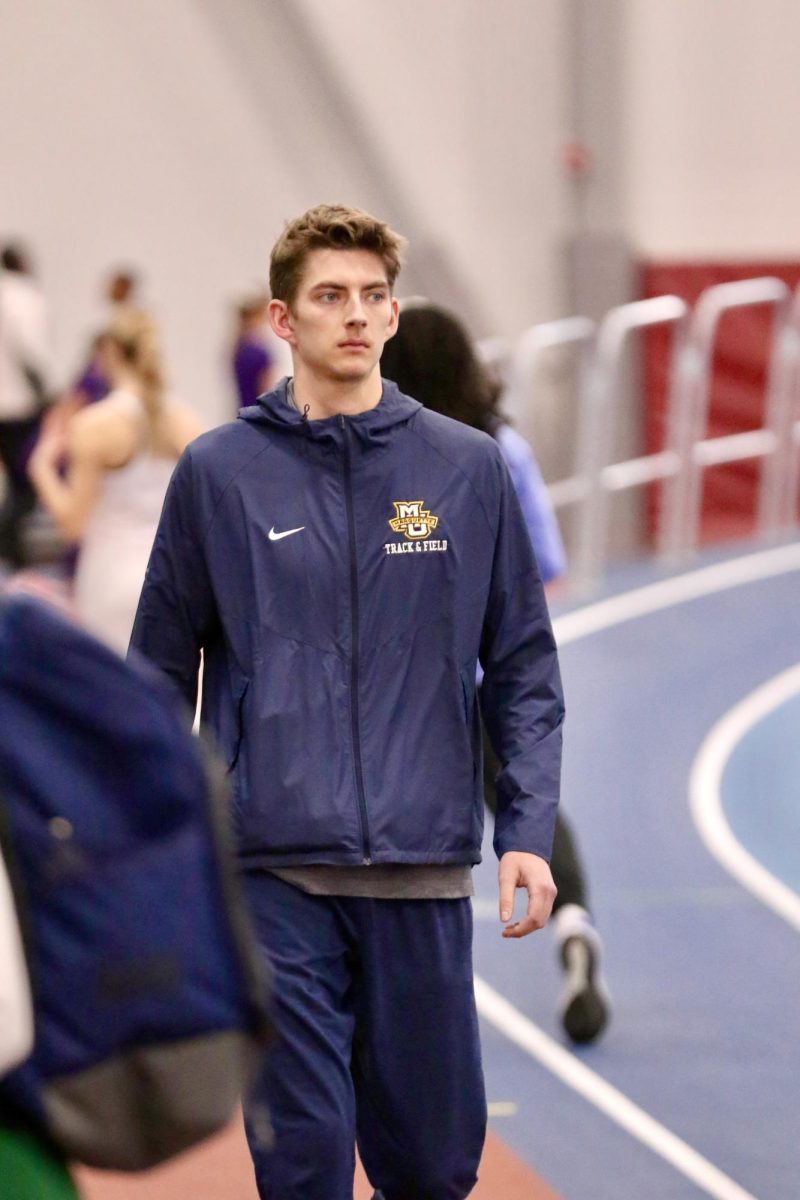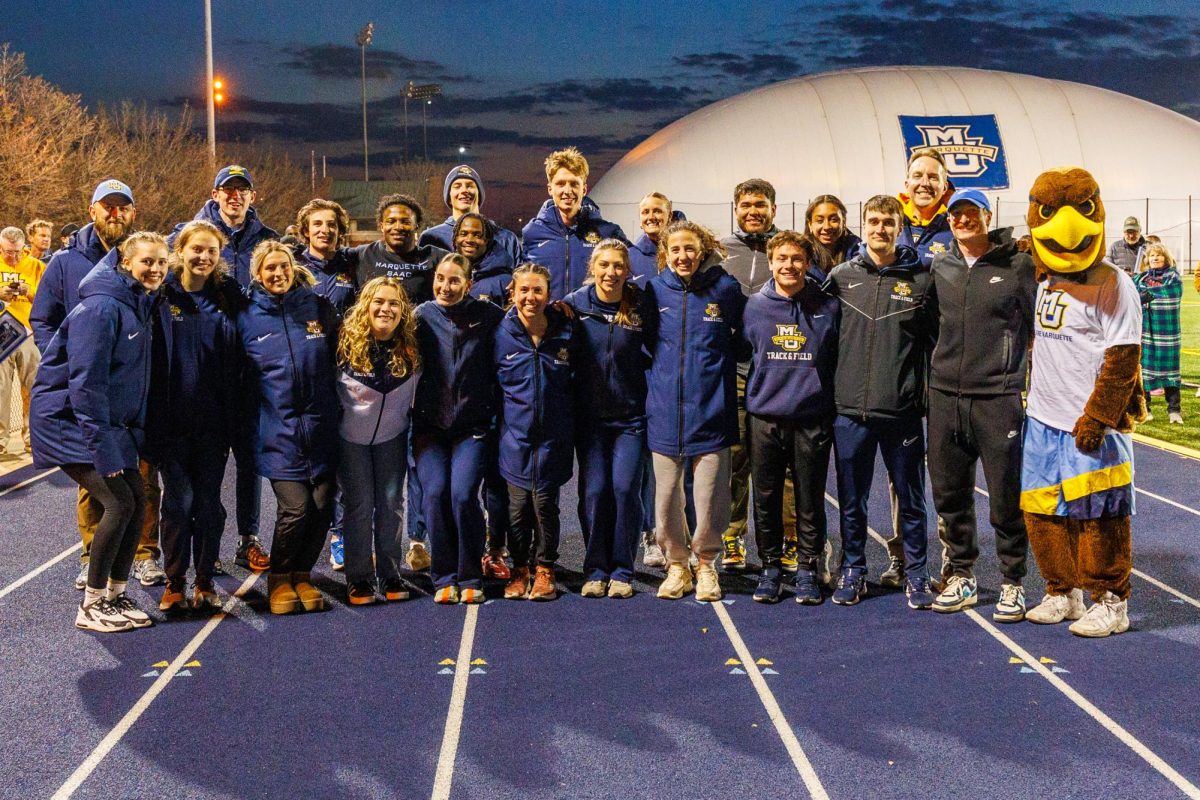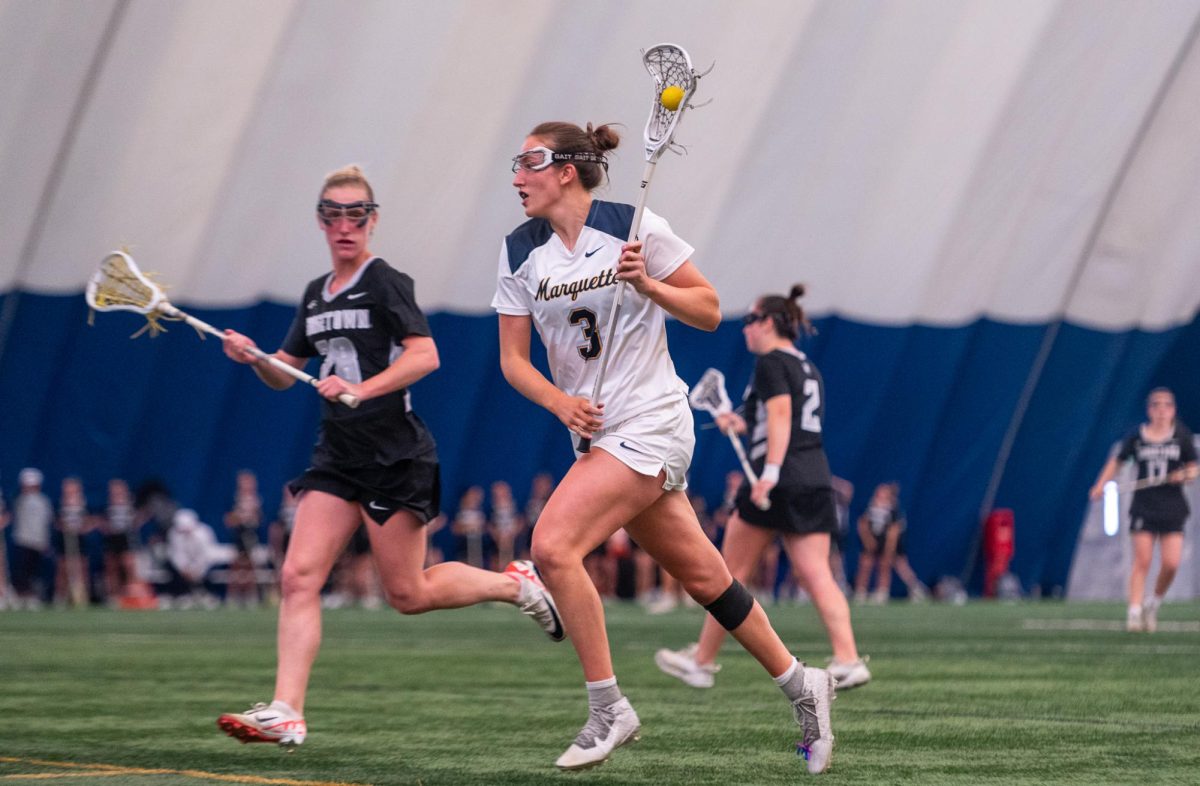The pole vault event in track and field is not similar to any other events in the sport because any person can’t just get lucky and perform a good vault.
Head pole vault coach Zach Pawlowski said it’s different because you can’t stumble upon success in the event.
“You guys are doing something that nobody else can do,” Pawlowski said. “You can go out and play tennis, golf, you can get lucky when you do those things. You can’t just show up and accidentally pole vault.”
Pawlowski said that many other event athletes are surprised when they see how exciting practicing for the event is.
“Pole vaulting is fun. Practice is fun. It’s just a fun thing to coach because it’s a fun sport to be a part of,” Pawlowski said. “You watch these multi-event athletes who have never done it before in their lives and they come and do this and say ‘This is so much fun. This is so much better than training for this or that.'”
First-year pole-vaulter Emma Kingsley said the entertaining aspect of the event is why she got into vaulting in the first place.
“I was doing middle school track and they were doing a bunch of their drills and I said, ‘That looks fun. Can I try it?’ My coach said, ‘You have to be able to do two pull-ups.’ So, then I did two pull-ups and here we are six years later,” Kingsley said.
Pawlowski said it’s not all fun and games because the sport is physically demanding in several aspects.
“Physically, it’s differently demanding. We have our sprints coach that works on their plyometric work like their vertical ability, their speed and their mechanics while they’re running,” Pawlowski said. “I do all of the technical work. Then, in the weight room, they’re doing a lot of their strength work.”
Sophomore pole-vaulter, Kaitlyn Huebner said there is a routine in practice that also helps build an athlete’s endurance for the meet.
“You’re going to take about that many [15-20] jumps in a meet including practice. Though once you start jumping and the bar goes up, you get three attempts at that height and if you miss, you’re done. But, if it takes you three attempts to make one, then three more on the next one and the next one, that’s already nine jumps. Endurance is really helpful for that,” Huebner said.
Kingsley adds that the mentality behind every single jump is just as important as the stamina needed for the action.
“You have to trust you know what you’re doing,” Kingsley said. “You can’t go into it thinking this isn’t going to be a good vault. You have to have a lot of confidence when you’re running down the runway and sticking a thirteen-foot pole in a box to get you up in the air.”
Huebner agrees with this idea and said that a vault athlete needs to take every jump at face value while also understanding there’s always room for improvement on the next one.
“You have to take each jump as it is and if you miss, we watch a video and figure out what kind of small tweaks you have to make, or you just simply have to go again,” Huebner said. “There’s a lot of things you could change, but more often than not, it’s a minor tweak to get you over the bar. It’s not completely defeating when you miss. You just have to go again, knowing that you will make it.”
Pawlowski said having confidence while making attempts in the event is critical and that knowing there is an inevitability for misses is important. This is because athletes continue attempts until they fail.
“You may do everything perfect, everything is great but then you don’t make it,” Pawlowski said. “So, you have to have a very short memory and take the victories when you can have them because it’s a very technical event, and it’s very challenging to do every single thing right, every single time.”
Though, at the end of the day, Pawlowski said he makes sure to remind his athletes that there are bigger goals and endeavors to accomplish in their future than vaulting.
“This sport should be fun — it’s not supposed to be a stressful thing,” Pawlowski said. “It’s such a technical and frustrating sport that if you make it your whole life, you’re just going to be miserable. This is just a part of their life. It isn’t their whole life.”
This story was written by Benjamin Hanson. He can be reached at benjamin.hanson@marquette.edu or on Twitter @benhansonMU.







